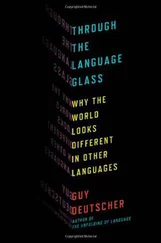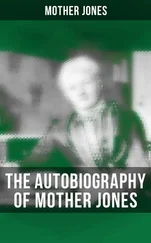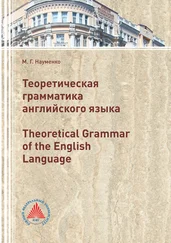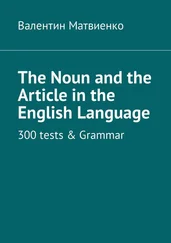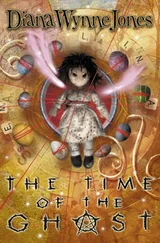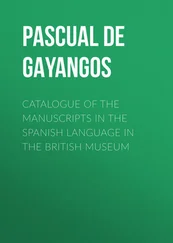When blood from two people is mixed, it may turn into a sticky mess. The process is controlled by a system of antigens called the blood groups. Only certain combinations can mix successfully. Some groups, ABO and Rhesus for example, are familiar, while others, such as Duffy and Kell, are less so. Because o[their importance in transfusion, millions of people li.ivc been tested. A dozen systems are screened on a routine basis and each comes in a number of forms. This miijiII sum pie of genes generates plenty of diversity. The chances ot two Englishmen having the same combination of.til twelve blood groups is only about one in three thousand. Of an Englishman and a Welshman it is even less;imt <>l.in Unglish person and an African less again.
Since the discovery of the blood groups and other cues on the surfaces of cells, there has been a technical revolution. Like the stone age revolution a thousand centuries ago, it depends on simple tools that can be used in many ways. The DNA of different people can now be compared letter by letter, to test how unique we are. The Human Genome Diversity Project is a spin-off from the main mapping effort which has tested thousands of people. On the average, and depending on what piece of the DNA is tested, two people differ in about one or two DNA letters per thousand; that is, in about three to six million places in the whole inherited message. Some of the differences involve changes in single bases (single nucleotide polymorphisms, or 'snips' as they are called), some in the number of short repeals (it particular sequences ('microsatellites 1and 'mini-s.ilrllKcs'] and some turn on the presence or absence of hip. nl riHilnle DNA that leapt into a particular place in the genome long ago. Blood groups show how improbable it is that two will be the same when a mere twelve variable systems are used. The chance that they both have the same sequence of letters in the whole genetic alphabet is one in hundreds of billions. Genetics has made individuals of us all. It disproves Plato's myth of the absolute, that there exists one ideal form of human being, with rare flaws that lead to inborn disease.
Variation helps us to understand where we fit in our own family tree, in the pedigree of humankind, and in the world of life. Relatives ait more likely to xh.ne genes because they have an ancestor in lommou. As,tll genes descend from a carrier long dead they can be used to test kinship, however distant that might be. The more variants two people share the more they are related. This logic can be used to sort out any pattern of affinity.
This detective work is easiest when close — or identical — relatives are involved. The US Army tests the fit of dead bodies to their previous owners by storing DNA samples from soldiers in the hope of identifying their corpses after death. DNA can also say a lot about the immediate family. Once, immigration officers faced with applicants for entry often refused to believe that a child was the offspring of the woman who claimed it. Comparison of the genes of mother and child almost always showed that the mother was telling the truth. Our society being what it is, the tests are now less used than they were. However, not all families are what they seem. Attempts to match the genes of parents and offspring in Britain or the United States reveal quite a high incidence of false paternity. Many children have a combination of genes which cannot be generated from those of their supposed parents. Often, they show that the biological father is not the male who is married to the biological mother. In middle class society about one birth in twenty is of this kind.
Such detective work can skip generations. During the Argentinian military dictatorship of the 1970s and 1980s thousands of people disappeared. Most were murdered. Some of the victims were pregnant women who were killed after they had given birth. Their children were stolen by military families. When civilian rule was restored, a group of mothers of the murdered women began to search for their grandchildren, whose DNA was compared with rhose who claimed to be their parents. The message passed in the genes enabled more than fifty children to be restored to their biological families, two generations on.
Other families have no hope of restoration. Bones dug up in a cellar in Ekaterinburg in 1991 were suspected to be those of the last Tsar and his family, shot in 1918. Checks of their DNA against modern relatives proves that the skeletons are, indeed, the remains of the Romanovs. Intriguingly enough, the skeleton of one young girl imprisoned with the group was missing. A woman known as Anna Anderson (who died in Virginia in 1984) claimed for many years to be the absent child, Anastasia, the daughter of the Tsar. Her assertion was rejected by a German court, but was accepted by thousands of emigre Russians. A check of the genes contained in a sample of her tissue found after her death showed her not to he related to the Romanovs, but instead to be (as many had suspected) a Pole, Franziska Schanzkowska, who had been rescued from a suicide attempt in a Berlin canal and ever after believed herself to be of noble blood.
Anna Anderson's claim to the Russian Eagle was false; but everyone has been granted a genetic coat of arms to democratize the search for descent. Like that of the Romanovs, it records who the forebears were and from whence they came. When people move they take more than their escutcheons. The DNA goes too, so that maps of genes do more than just record ancestry. They recreate history. A Message from our Ancestors
History itself may suggest where to start. Alex Haley, in his book Roots, used documents on the slave trade to try to find his African ancestors. He found just one, Kunta Kinte, who had been taken as a slave from the Gambia in 1767; and later became suspicious of the tales told to him by a native story-teller upon which Roots was in part based. The genes of today's Black Americans might have solved his problem.
The African slave trade began in the days of the Roman Empire. By AD 800 Arab traders h;ul extended it to Europe, the Middle Hast and China. In (he fifteenth century the Spanish and Portuguese started what became;t mass migration, at first from the Guinea Coast, modern Mauritania. Mediaeval Venice had black gondoliers and by the sixteenth century one person in ten in Lisbon was of African origin. Soon, a bull of Pope Nicholas V instructed his followers to 'attack, subject, and reduce to perpetual slavery the Saracens, Pagans and other enemies of Christ, southward from Cape Bojador and including all the coast of Guinea'.
The main trade was to the New World. About fifteen million Africans were shipped across the Atlantic. They came from all over West Africa and were dispersed over much of North and South America. The United States imported less than a twentieth of the total, but by the 1950s the USA had a third of all New World people of African descent, suggesting that slaves were treated less brutally there than in the Caribbean or Brazil. Slaveowners had their own preferences. In South Carolina slaves from the Gambia were favoured over those from Biafra as the latter were thought to be hard to control. In Virginia the preference was in the opposite direction.
Many Africans have an abnormal form of the red pigment of the blood, haemoglobin. One of the amino acids has suffered a genetic accident, a mutation. This "sickle-cell' form protects against malaria. Its protective role has disappeared with the control of the disease in the United States, but many thousands of Black Americans still carry the gene as an unwelcome record of their past. Anyone, however light their skin, who has the sickle-cell variant must have had at least one African ancestor. The disease was first recognised in 1910, and was at once used as a statement of racial identity: anyone with the illness (whatever their colour) must, by definition, be a Negro. Indeed, its very presence was seen as proof of the degenerate nature of American Blacks. The related disorders in southern Europe also showed, in the words of one racial theorist, that such people were vno(white clear through' and that their immigration to the I ISA would 'produce a hybrid race of people as worthless.uul tuiile as the good-for-nothing mongrels of Central America/
Читать дальше
Конец ознакомительного отрывка
Купить книгу






